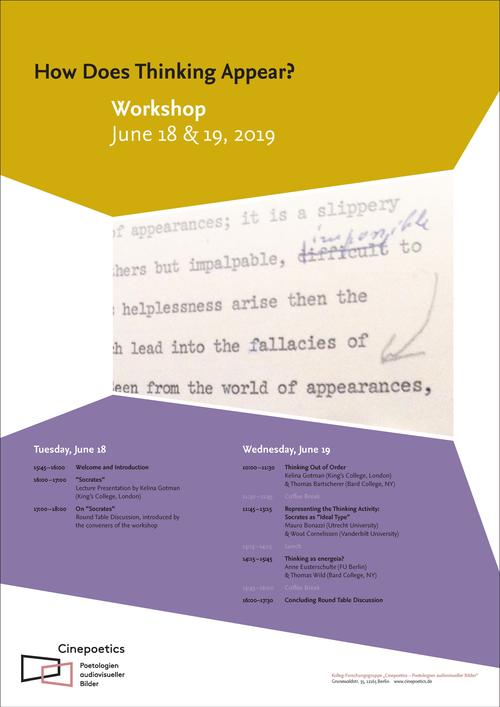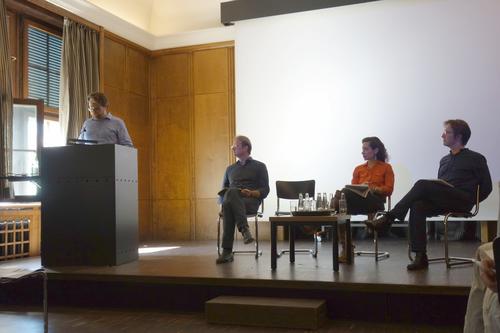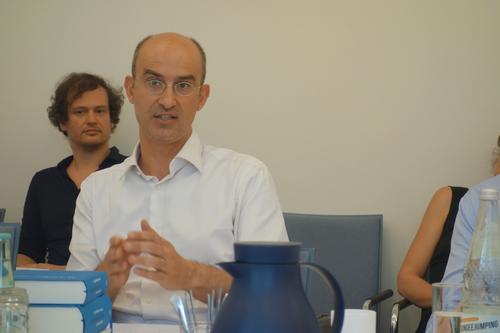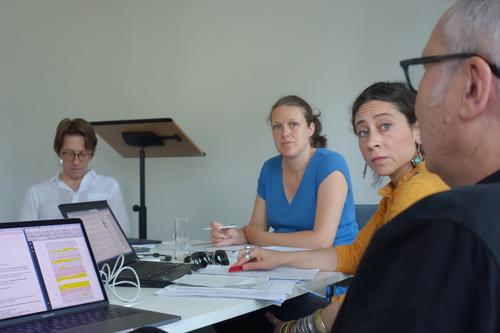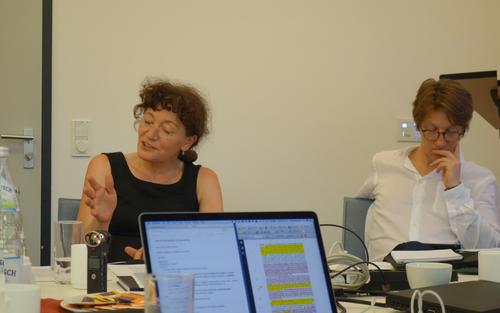How Does Thinking Appear?
18./19.06.2019 | Workshop by the Cinepoetics group with Thomas Bartscherer, Wout Cornelissen and Thomas Wild.
Research Focus: Shared Sensibilities
It was Hannah Arendt's final project, The Life of the Mind,which inspired the titular question – and scholarly goal – for this workshop. Hence, the presentations and discussions centered around the philosophical groundwork of Arendt's theses, especially her perspective on the ideas of Socrates and Immanuel Kant. By scrutinizing the role of metaphors, similes, and examples, the workshop raised the question of how thinking begins and whether we can fathom its location.
In a daring lecture performance, Kelina Gotman embodied Hannah Arendt's original typescript for a lecture on Socrates. Here, she makes use of metaphors to describe her view on Socrates as a pure thinker, while at the same time giving fruitful insight into the process of thinking itself. It is imperative to "de-frost" the frozen word to enter the realm of meaning, which is to say, one should concentrate on the emerging idea within the mere concept of things. A round table discussion with the conveners of the workshop framed Arendt's lecture within her work and explored its theoretical implications further.
On the second day, Kelina Gotman's and Thomas Bartscherer's shared presentation "Thinking Out of Order" investigated Arendt's metaphors of housing and inhabiting with regard to the lecture performance. Gotman contextualized these notions with her own work on theories of the body as both an archive and a communal political entity. Bartscherer emphasized Arendt’s notion of the 'judgment of taste' (Geschmacksurteil) as basis for creating and sustaining communities. This is achieved by “thinking in terms of another” (erweiterte Denkungsart, in Arendt’s terms), which is central to the engagement with metaphors.
In "Representing the Thinking Activity: Socrates as 'Ideal Type'", Mauro Bonazzi and Wout Cornelissen shared a perspective on the human activity of thinking. Bonazzi brought together notions of thinking through the history of philosophy: from thinking as a way to become immortal (in ancient Greek philosophy) to thinking as a danger to sanity (in Friedrich Nietzsche’s philosophy). Cornelissen further dwelled on Arendt's view on concepts. Before reflexivity and contemplation can appear as a thought, thinking as an activity needs to "de-frost" rigid concepts in order to bloom. In addition, thinking gives us nothing other than perplexities, which we need to share in order to gain insights. Thus, thinking can never be understood as a process with an ending to it.
Anne Eusterschulte and Thomas Wild gave the last shared presentation of the workshop: "Thinking as energeia." They highlighted Arendt's argument to perceive of the process of thinking as multi-directional movement. In following her readings of Aristotle's concept ofenergeia, the act of realizing something that is in our capabilities, Wild and Eusterschulte linked this thinking-as-movement to life itself. In perpetuating the movement, the mind keeps itself alive through realizing what it is able to think of. This key notion of the workshop was then picked up in the final discussion with regard to the erweiterte Denkungsart. With the metaphor of thinking-as-movement in mind, the role of communal negotiation of truth was further explored in the workshop's conclusion.
